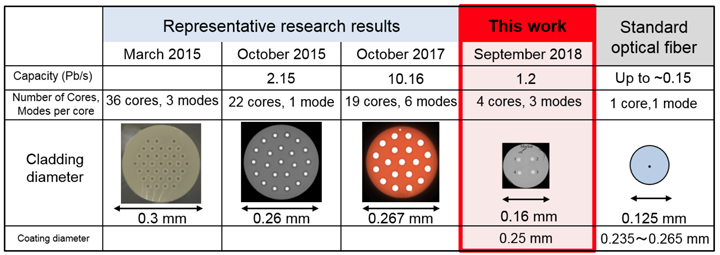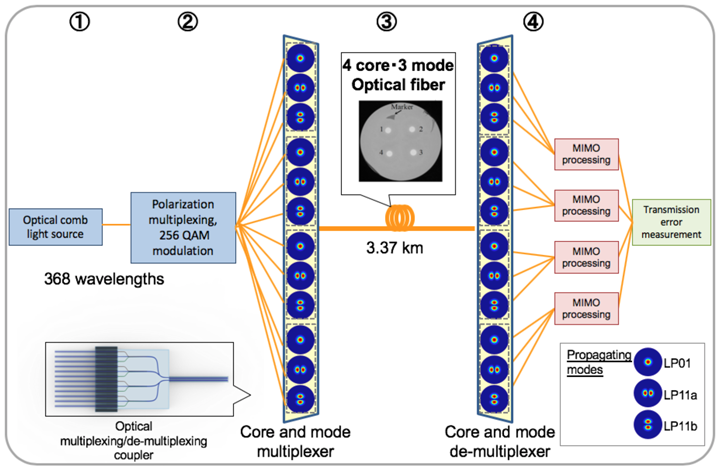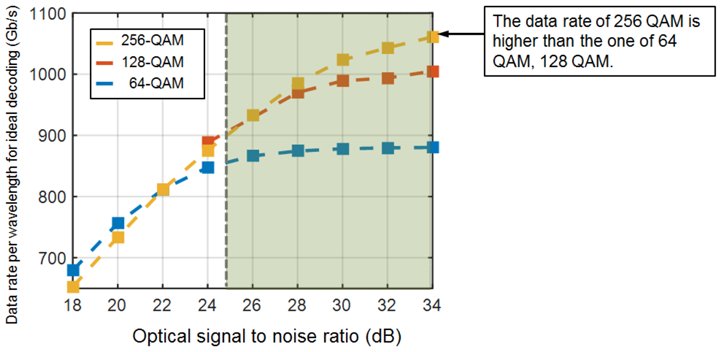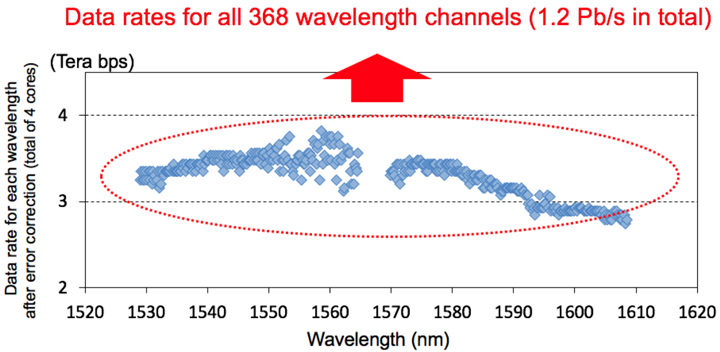Successful Transmission of 1.2 Pb/s Over a 4-core 3-mode Optical Fiber with a Cladding Diameter of 0.16 mm
- Towards the early implementation of ultra-large capacity transmission with a new type of practical optical fiber -
November 21, 2018
National Institute of Information and Communications Technology
Fujikura Ltd.
Points
- 4-core, 3-mode optical fiber with 0.16 mm diameter, standard single mode optical fiber size.
- Couplers capable of simultaneously cores and mode multiplexing/de-multiplexing.
- Progress to the practical realization of an over 1 Pb/s optical fiber.
Background
Achievements

Future Prospects
References
Appendix
1. Transmission system developed this time

2. Results of Experiment


Technical Contact
Yoshinari Awaji, Hideaki Furukawa
Photonic Network System Laboratory
Network System Research Institute
NICT
Tel: +81-42-327-6337, 5694
E-mail:





















Sachiko Hirota
Press Office
Public Relations Department
NICT
Tel: +81-42-327-6923
Fax: +81-42-327-7587
E-mail:




















Satoshi Hazama
Fujikura Ltd.
Public Relations Group
General Affairs & Public Relations Division
Tel: +81-3-5606-1110
Fax: +81-3-5606-1501
E-mail:
























